The Guide to Creating a Killer Modeling Portfolio
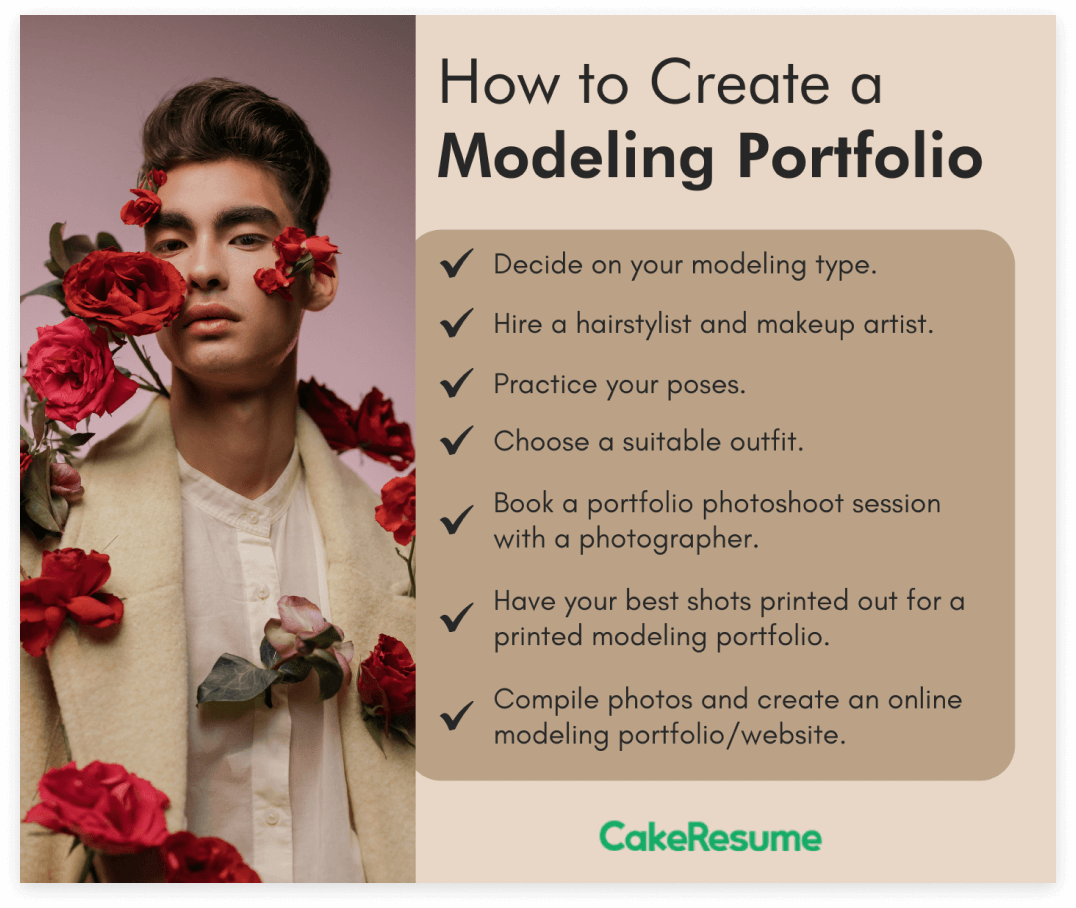
In this article, you will learn about:
A modeling portfolio is a collection of photographs that highlights a model’s style range and ability. It is essentially a resume that showcases a model’s strengths and experiences while establishing a good first impression among modeling agencies and clients.
The term “model portfolio” is also widely used in the field of finance. By definition, it is a diversified group of assets designed to achieve expected returns with corresponding risks. Make sure to proceed while knowing the difference between this term and the model portfolio that we are going to discuss in this article.
In this article, we will guide you step-by-step on how to build a modeling portfolio and provide tips and examples for making professional model portfolios.
What Is a Modeling Portfolio?
So, what exactly does it mean to have a collection of photographs for a modeling portfolio? How many photos should be in a model portfolio? Do selfies count as professional photographs? What do the model agencies and clients look for in an outstanding model portfolio?
There are many ways to create and present your model portfolio based on who and where your audience would be. Here are the common mediums for models to exhibit their photograph portfolios:
Printed modeling portfolio
A printed model portfolio is the most used medium back in those days without smart devices. While it is more convenient to carry a tablet or a smartphone around, the common industry practice is to prepare a printed version of model portfolio photos.
You could either purchase a photo book and insert the printed photos, or assemble a professional portfolio book online and have it printed. Either way, you should keep the cover black, avoid ring bindings, and choose high-quality images only.
Online modeling portfolio or model portfolio website
It is easier nowadays to create a website on your own. There are many free website builders for models to create their online modeling portfolio. You could also seek a web designer to create a model portfolio website for you.
While managing a social media page might seem to be enough for your branding, it is still recommended to have your own website because you would have control of the entire page design. With a personal website, you could easily organize the photos of different projects or types of modeling you have experience with via tabs and page links.
Social media platforms
To build publicity and engage with a wider and younger audience, opening social media accounts is a great way to start. Many models, modeling agencies, photographers, and clients are on social media as well. Not only could you maintain a cost-effective model portfolio, but with the growing influencing power you might attract more clients and professional relationships in the long term.
Steps to Creating a Modeling Portfolio
Decide on your modeling type.
There are many categories of modeling that one can get into, including fashion, runaway, fitness, commercial, swimsuit/lingerie, parts, glamour, print, etc. To begin making your model portfolio, you should determine the modeling type(s) you prefer and are best suited for based on their own preferred specifications.
Making your modeling portfolio specific for one model category would help pinpoint your goal while making it easier for recruiters to place you in your best-suited category.
Hire a hairstylist and makeup artist.
Although not required, it is recommended to have your hair and makeup done by a professional. Hiring a professional hair and makeup artist would save you the hassle of preparing everything on your own.
Communicate with them on the different styles and outfits you want for the model portfolio shoot. Make sure they could stay for the whole time to help in between style changes and during the shoot.
Timely hair and makeup adjustments may be needed due to various lightings and effects used by the photographer. Don’t forget to do a couple of test shots with your hair and makeup done before the actual shooting starts.
Practice your poses.
On the day of the shoot, everything is bound by time and budget, so you don’t want to waste it on thinking about what poses to make. Before the shoot, practice different postures using each part of your body and facial expression. To begin with, search online for a wide variety of poses in a particular category that models use in their model portfolio.
Choose suitable outfits.
Prepare a couple of outfits according to the type of modeling that you are aiming to do in your model portfolio.
Remember to include a basic outfit like a plain shirt with form-fitting jeans for the recruiters to clearly see your body proportion. Avoid exaggerated outfits like clothes with prints, patterns, or are oversized/layered that would cover up your frame.
Book a portfolio photoshoot session with a photographer.
Your photos are the meat of your portfolio. It is best to hire a professional photographer that has experience in shooting model portfolios. You can browse through different photographers' online portfolios and choose someone that would suit your style and is easy to communicate with.
Arrive early for the shoot and be polite and professional. Prepare a “shot list” to make sure both you and the photographer are on the same page. Make sure the photographer and stylist have allotted you enough time to accomplish everything in one session.
After the shoot, remember to request digital copies from your photographer so you can choose the best shots without haste.
Have your best shots printed out for a printed modeling portfolio.
After the photo shoot, you probably have a large collection to go through. Choose your utmost best shots that cover all your angles. 10 to 20 images should be enough for a professional model portfolio.
Include some basic shot angles such as clean headshots (with and without smiling), mid-length shots, full-body shots for all outfits and locations. Other photos that could be included are the ones that suit a specific modeling genre like editorial, fashion, or commercial.
Compile photos and create an online modeling portfolio/website.
When you are done choosing your best shots, create an online modeling portfolio using your own website, social media, or both. While you can show more than 20 images online, it is best to keep it short and simple since most recruiters won’t have the patience to look through your entire gallery.
Emphasize your best shots by putting them at the top of the page. Include other types of media like videos or commercials you’ve worked on, if any, to show what you are capable of.
Best Free Modeling Portfolio Websites
Wondering what website builder should you choose for your model portfolio website? Here are some best model portfolio website builders to try out:
CakeResume
CakeResume’s online portfolio maker is suitable for creating and sharing professional portfolios for modeling or any other industry. One of its unique features is the convenience of creating and maintaining an online portfolio, a digital resume, and a user profile (serving as a personal website/social media) all in one place. You can also create multiple modeling portfolios under one profile for different projects or work.
Pros:
- User-friendly interface and social media-like community
- Easy to link and organize multiple portfolios under one profile
- Unlimited numbers of media in portfolio
Cons:
- Allows up to 5MB of file uploads
- 3 typefaces available for text
Having an online portfolio website is highly crucial in paving your career path as a model. With CakeResume’s online portfolio maker, you can create your very own online portfolio that showcases your true skills and creativity. Create your free model portfolio now!
Wix
Wix is a popular website builder among creative professionals as well as first-time website creators. The interface is easy to navigate for beginners and anyone can create decent-looking portfolios without any experience or knowledge in creating a website.
Some of its key features are the user-friendly drag-and-drop functions and over 800 templates for different professions to choose from. To find templates for building a modeling portfolio, simply type in the keywords in the search box.
Pros:
- 800+ customizable templates for a wide variety of professions
- Drag-and-drop tools and elements (animation included)
- Extremely easy to navigate for beginners
Cons:
- Hard to alter/copy-and-paste in-between templates
- Relatively slow loading speed
WordPress
WordPress is one of the most popular website builders for professionals in all industries. As a low-code platform, WordPress involves a bit of coding to develop a website. While you would have more control in customizing each part of your model portfolio website, it might be a little overwhelming if you have no prior experience in coding. Nonetheless, you might gain an upper hand in uniqueness and user experience with the elements you can control in WordPress.
Pros:
- 10K+ website themes to adopt
- Greater choice of extensions, add-ons, and plugins
- Complete control of website with low-code
Cons:
- Less suitable for beginners; takes more time to maintain
- Need basic HTML and CSS knowledge
Modeling Portfolio Examples
Here are 5 best model portfolio websites for different modeling types:
1. Fitness female model portfolio example
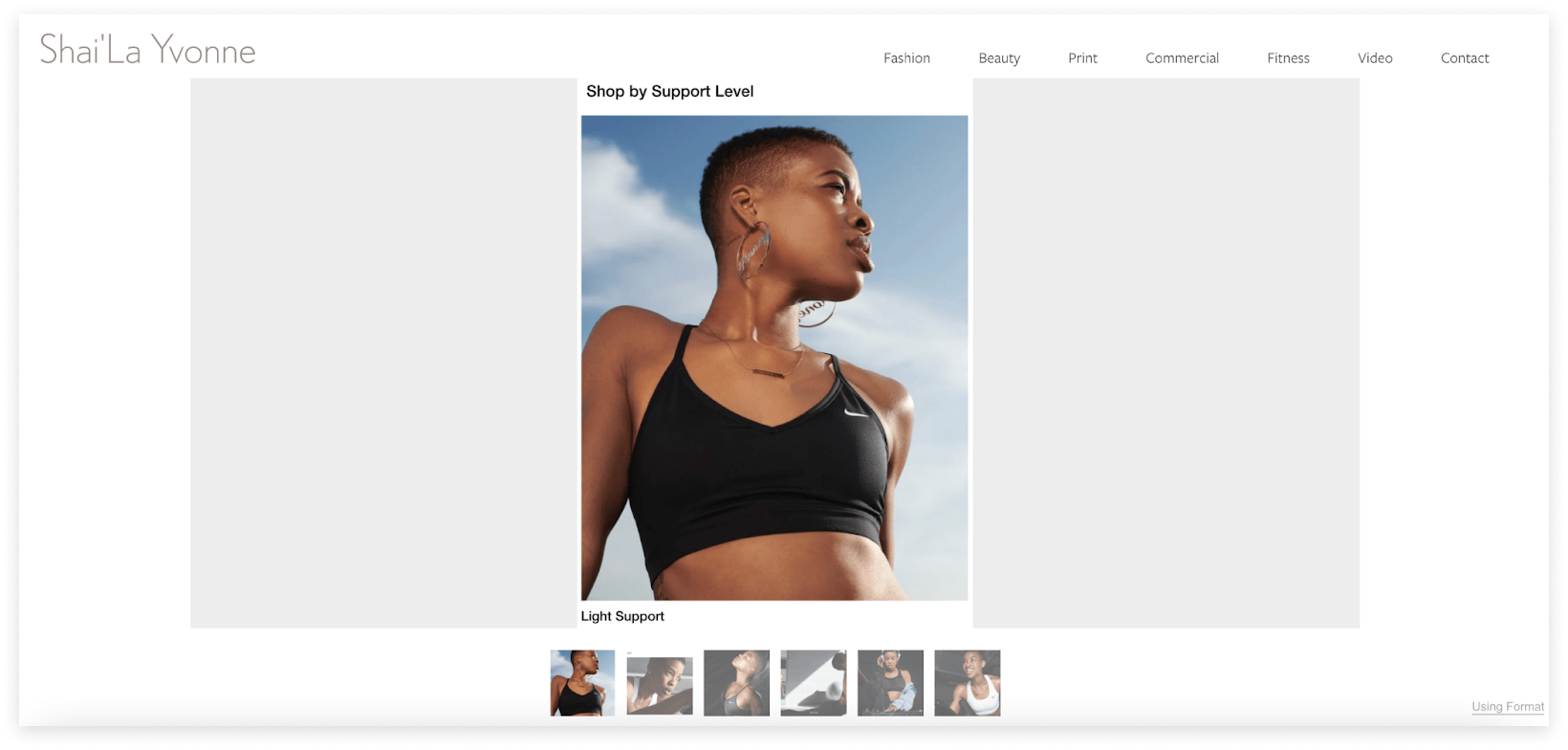
2. Hand model portfolio example
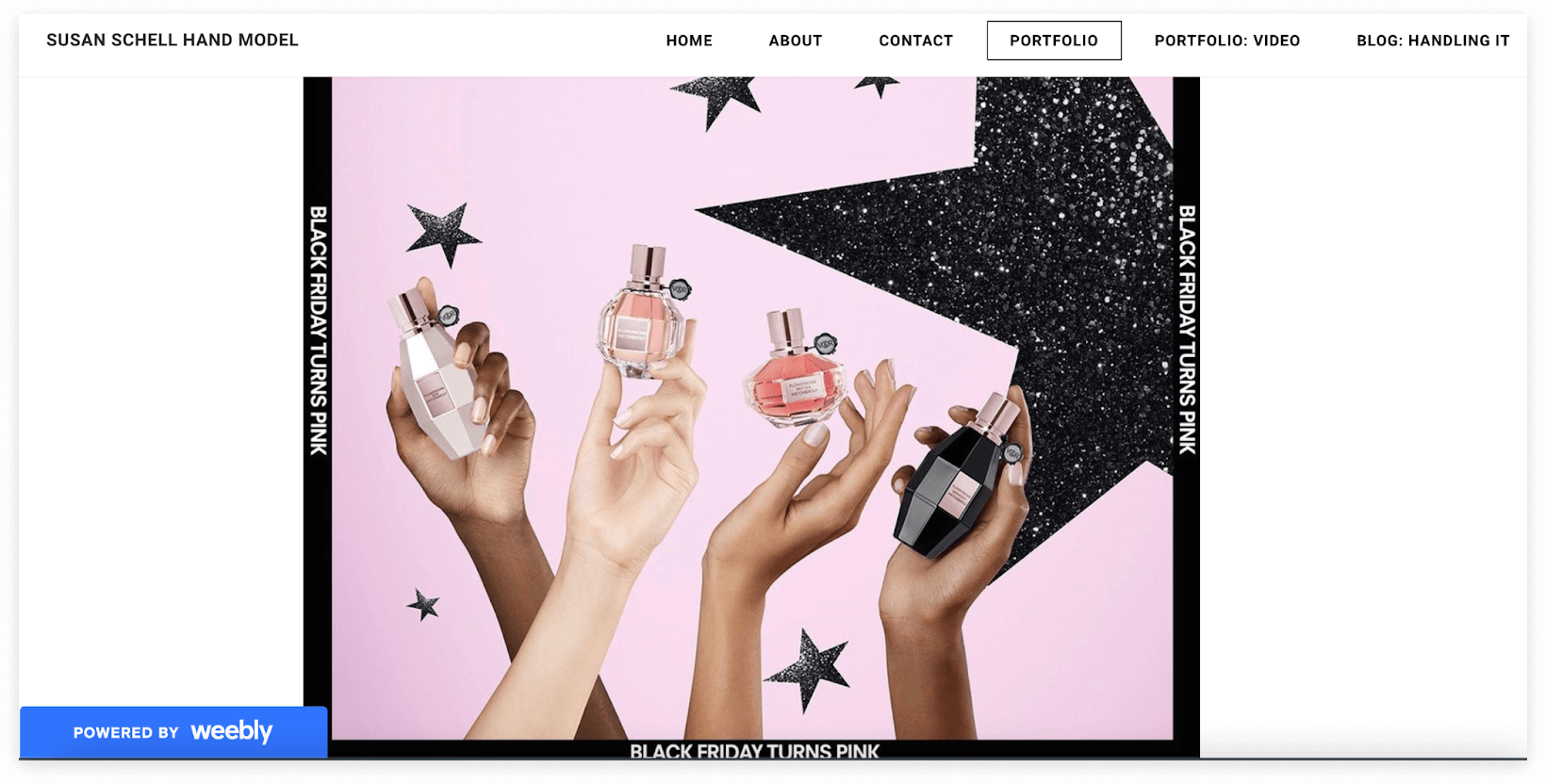
3. Fashion model portfolio example
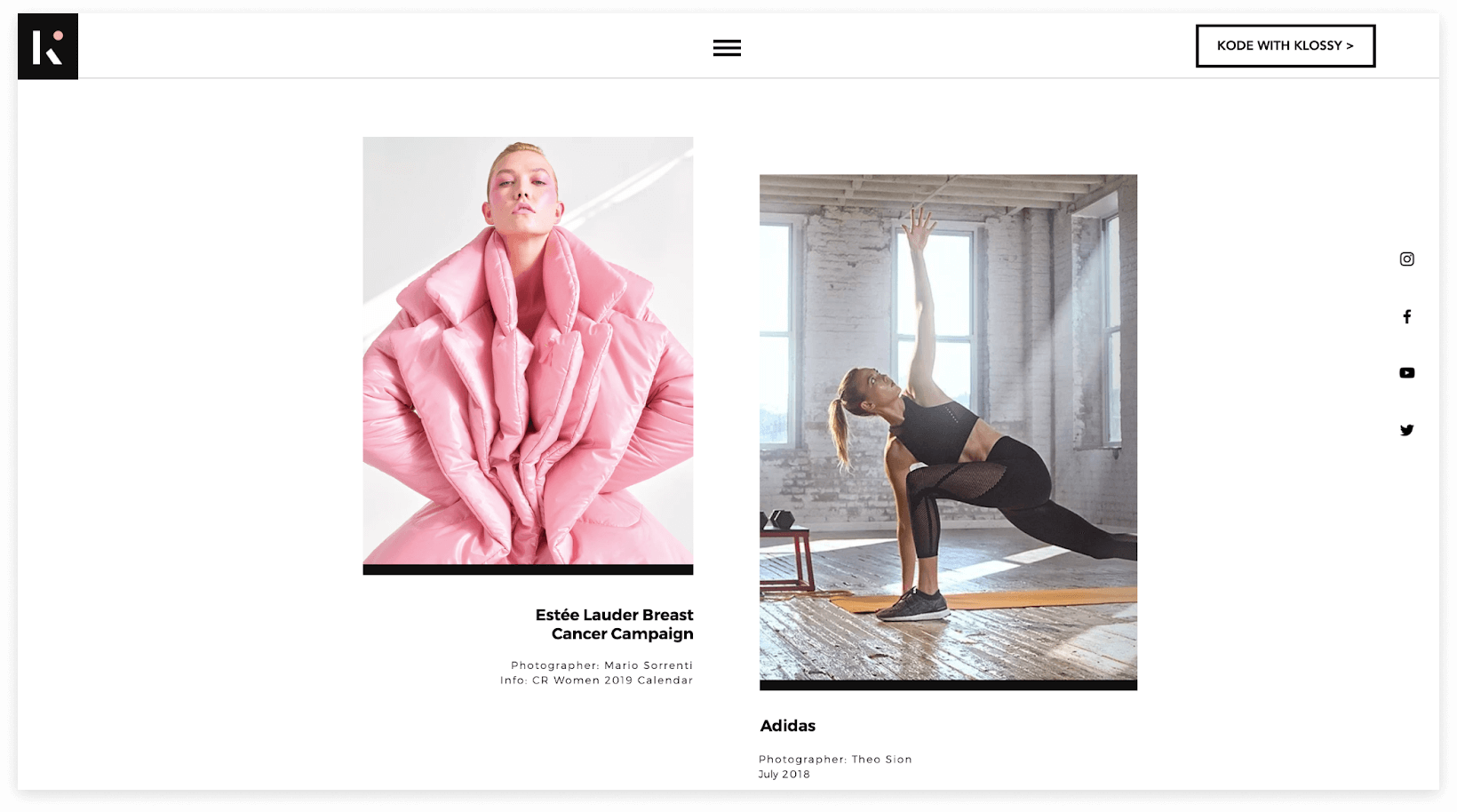
4. Commercial model portfolio example
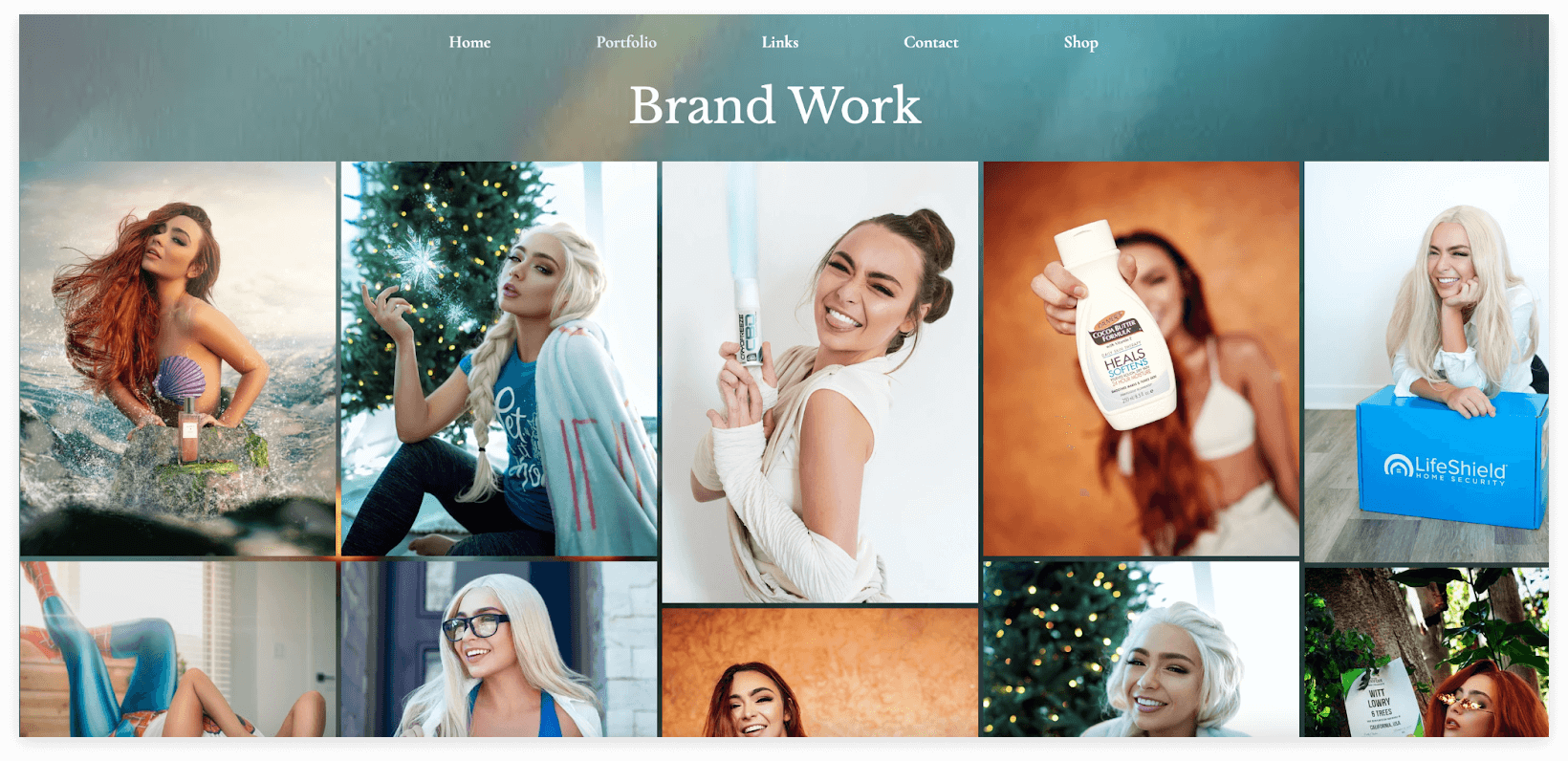
5. Plus size model portfolio example
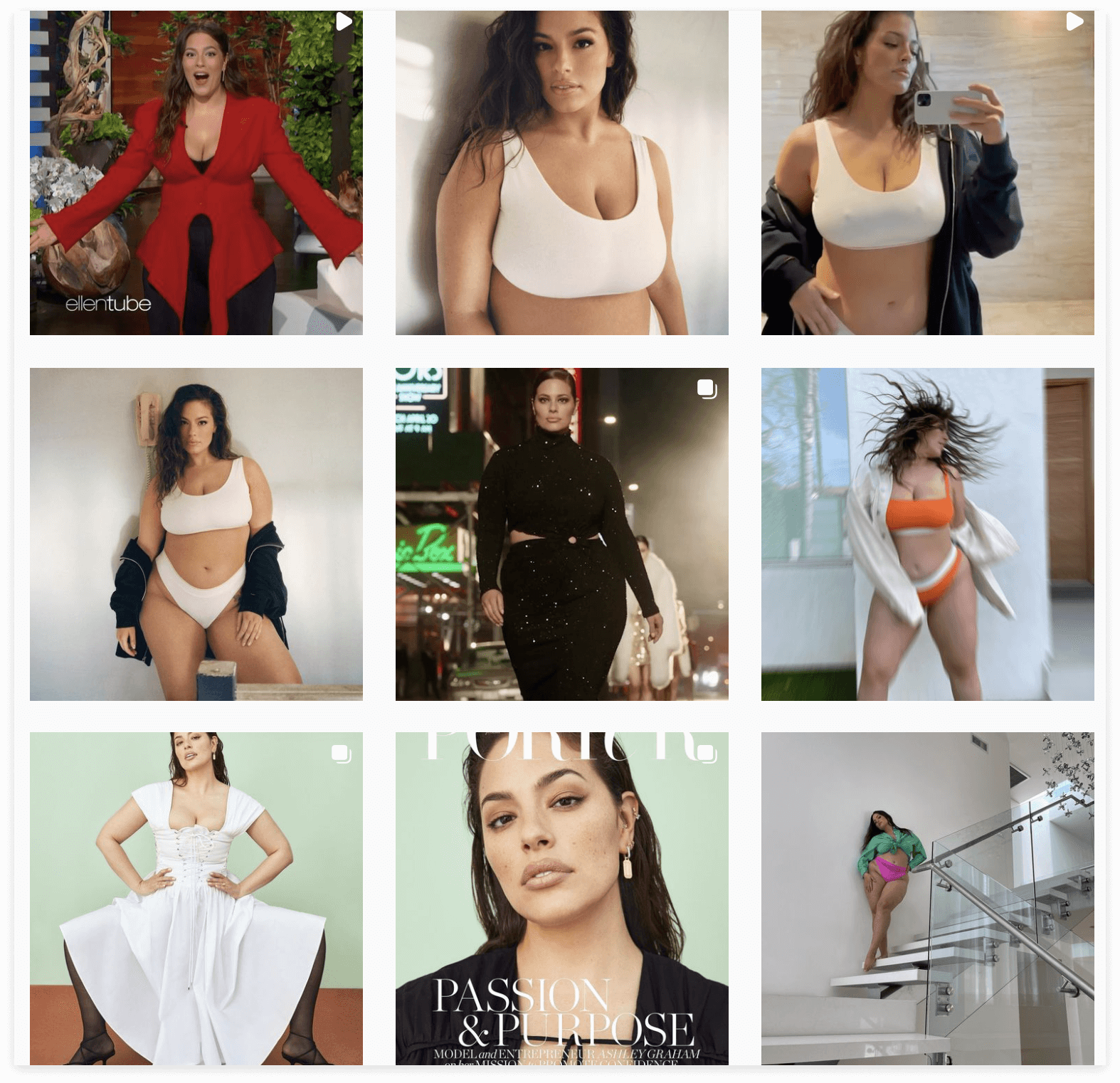
Tips on How to Make a Killer Modeling Portfolio
✨ Create a profile section in your online modeling portfolio/website.
Don’t forget to include a profile section, or an “About Me” page, in your modeling portfolio to list out the basic information that the potential clients need to know.
There’s no need to prepare a traditional resume since all the information needed is the portfolio photos and profile section, which includes the work you’re willing to do, any related experiences in acting or modeling, and your basic information:
- Age
- Height
- Body measurement/ size
- Eye Color
- Hair Color
- Distinguishing Features (freckles, birthmarks, tattoos, braces, etc.)
✨ Make sure the online modeling portfolio website is viewable on mobile devices.
It could be possible that the modeling agencies and clients won’t have time to sit down and look at your portfolio from a desktop. So, make sure your website is also viewable on phones and tablets, with proportions adjusted to the proper length of the screen.
✨ Use a clean design that focuses on the pictures.
Your model portfolio photos are what determines your competence in the modeling profession, not the graphic designs of your portfolio. Thus, keep both the printed portfolio and online website simple and clean for the recruiters to focus on your pictures.
✨ Choose a good size for your printed modeling portfolio.
The industry standard for a modeling portfolio book is 9 by 12 inches, and slightly larger or smaller than that is usually acceptable. Make sure you have high-quality pictures with clear and realistic colors showing on the papers. Also, do a test print with cheap papers first if you are not sure whether the photos would be cut after binding.
✨ Include photos that show physical ages.
The chronological age of a model isn’t as important if he or she can show versatility in their physical appearance. Modeling agencies would want to know how young or old the models can look in order to match them with suitable clients.
In fact, some agencies will not display the real age, but an age range that a model can portray himself or herself in. Thus, you should include photographs that show a range of ages you can portray convincingly when building a modeling portfolio.
✨ Include photos of various facial expressions and emotions.
Demonstrating distinct facial expressions and emotions is crucial for freelance or commercial model portfolios. For entry-level models, you might work on a variety of cases while not all of them would be in the same genre. You should feel comfortable showing different facial expressions and emotions that may be contrary to your personality. And who knows? It might open doors for new opportunities.
✨ Experiment with different characters, styles, and looks.
While you could include a few photos of how you naturally look, the majority of your modeling portfolio should be photos of characters that you will likely be portraying. It could be photos from your previous works or sample shots for prospective employers to know what they can expect.
Incorporate a variety of settings, outfits, makeups, hairstyles, and poses to show that you are boundless and sincere about the modeling career.
🔑 Key Takeaways:
Besides being a mandatory requirement, it is important to have a modeling portfolio because, as a model, your work is to portray a character other than yourself.
You won’t get hired simply by showing a resume that lists your name and your experiences in XYZ agency. What your potential employer would care about is the visual representations of your ability and previous experience, which could be demonstrated by a model portfolio.
--- Originally written by Sandy Tuo ---
Khám phá thêm tài nguyên tuyển dụng và nghề nghiệp

With the intention of helping job seekers to fully display their value, CakeResume creates an accessible free resume/CV/biodata builder, for users to build highly-customized resumes. Having a compelling resume is just like a piece of cake!







